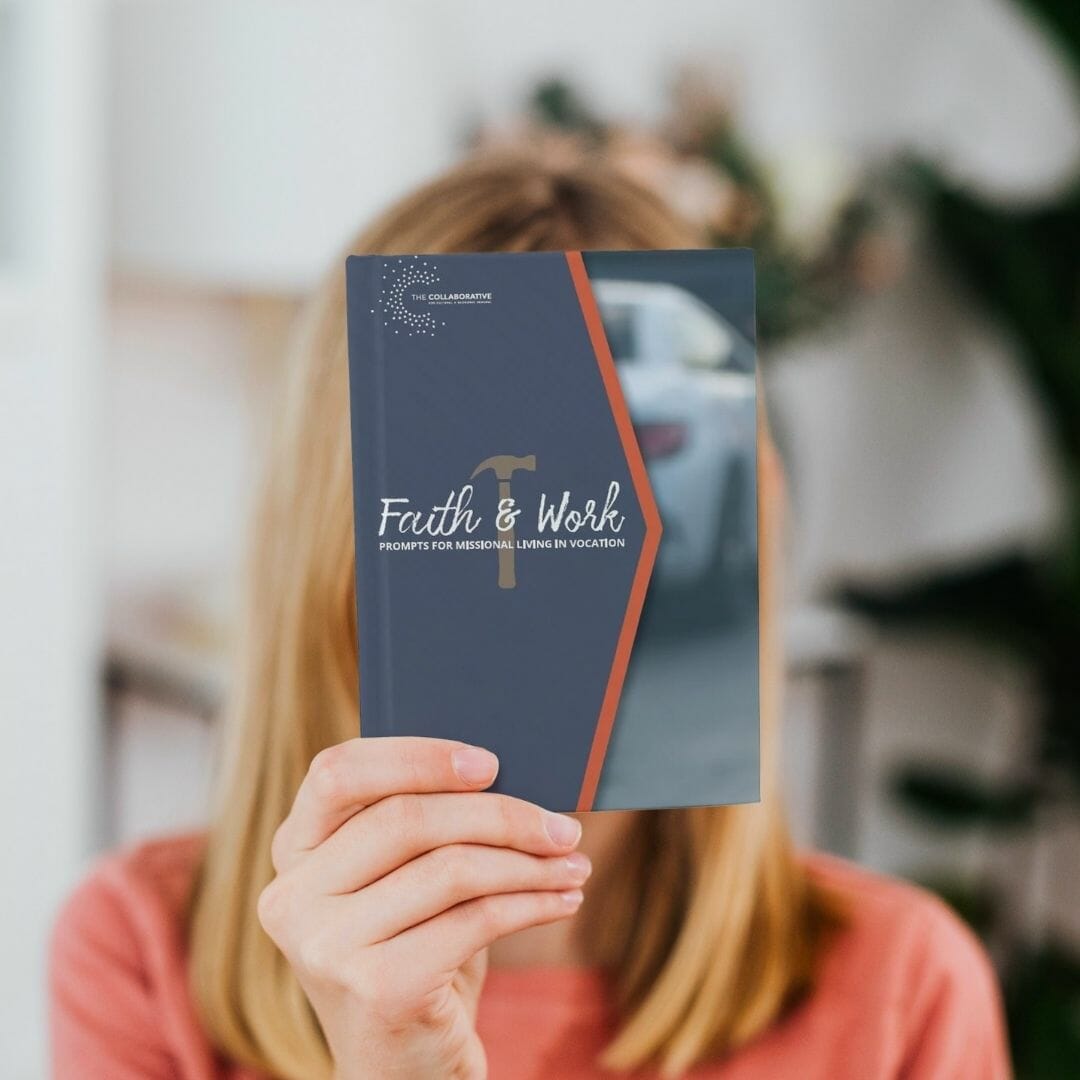Understanding the Incarnation: Why A Cursory Understanding of Art is Required
A look into integrating art and faith
By Matt Guilford
Is it a stretch to place so much emphasis on ensuring the integration of art and faith? Is it out of the question to say the whole Church must have a cursory understanding of art to understand the Incarnation of Jesus Christ? The subject of art and faith is an uncommon theme in the Church. How often do you hear sermon references to art in the Bible, or how believers ought to consider thinking about the arts?
For centuries, the Church integrated art and faith. To the Church and culture’s detriment, there has been a disintegration between art and faith for the past several hundred years. The disintegration of art and faith began with the Reformation and Enlightenment and has been a slow and steady tearing apart of what God designed as a beautifully integrated whole. Since the 1970s, American Evangelicalism’s relationship to the arts, in general, has been to use the arts as a form of gospel propaganda or impose an inevitable “return on investment” criteria upon it. This has fostered a Christian subculture with a low view of the arts. This reality has profoundly impacted artists, the Church, and the culture. The disintegration of art and faith has inflicted severe injury to the quality of art made by artists of the Christian faith and, more profoundly, the integrity of Christian theology. Because the theology of the arts in the Church has been weak or simply non-existent, the Church has largely abandoned the cultural domains of art, media, and entertainment. Artists have been dismissed to the fringes of Christian culture, community, and worship. God has lost His voice in culture and community.
Integration and Disintegration
Integration occurs when all of the parts of an object are brought together into a whole. Disintegration occurs when the cohesion of the parts disintegrates. N.T. Wright speaks into the consequence of the disintegration of art and faith,
The point is this. The arts are not the pretty but irrelevant bits around the border of reality. They are the highways into the center of a reality which cannot be glimpsed, let alone grasped, any other way. The present world is good, but broken and in any case incomplete; art of all kinds enables us to understand that paradox in its many dimensions. But the present world is also designed for something which has not yet happened. It is like a violin waiting to be played: beautiful to look at, graceful to hold— and yet if you’d never heard one in the hands of a musician, you wouldn’t believe the new dimensions of beauty yet to be revealed. Perhaps art can show something of that and can glimpse the future possibilities pregnant within the present time. (N.T. Wright, Simply Christian: Why Christianity Makes Sense)
It is time to reintegrate the Church and the arts into the cohesive whole God designed it to be.
The Foundation for Art and Faith
From the first sentence in the Bible, “In the beginning, God created…:” through the final pages of Revelation, God’s creativity as an artist is on full display. Through language, images, and story-telling, translates infinite truths into finite realites. Before one can understand the use of art within the Bible, the Bible must be reckoned as art. The argument could be made that the Bible is often held as the world’s greatest literary masterpiece. The Bible is a book written by over forty different authors, in three different languages, covering a period of four-thousand years. It is a book full of differing literary forms such as narrative, poetry, and proverbs. All of these elements coalesce to form one complete narrative. The Bible is a book that has inspired people for centuries.
Biblical Art Connecting Believers Directly to Jesus
Symbolism in the Old Testament provides examples of Biblical art connecting believers directly to Jesus. These verses from Exodus is one such example,
You shall not make for yourself an image in the form of anything in heaven above or on the earth beneath or in the waters below. You shall not bow down to them or worship them; for I, the Lord your God, am a jealous God, punishing the children for the sin of the parents to the third and fourth generation of those who hate me, but showing love to a thousand generations of those who love me and keep my commandments. —Exodus 20:4-6 (NIV)
In the above passage, God tells His people plainly what disintegration looks like in the relationship between art and faith (worship and obedience to God). God’s provision for artmaking is, “You shall not bow down to them or worship them.” The result of disintegrated artmaking is that the art becomes a source of worship. The costs of idolatry endure for generations. Conversely, those who willingly obey God’s ordinance to love him and keep his commandments will be shown love to a thousand generations.
Confirmation of the Ordinance
If God was not making a stipulation on the correct way to relate to created works of art, it would seem counterintuitive for Him to direct Moses to fashion a 3D work of art that would be used directly in the act of worship five chapters later.
There, above the cover between the two cherubim that are over the ark of the covenant law, I will meet with you and give you all my commands for the Israelites( Exodus 25:22, NIV).
In this passage, God is directing Moses on how to make the Ark of the Covenant, which was a rectangular wooden chest (52” L x 31” W x 31” H) overlaid with pure gold. Within the Ark, there were three objects: The 10 commandments (God’s moral law), a golden bowl full of manna (God’s provision), and Aaron’s budded rod (God’s authority). Atop the Ark knelt two cherubim facing each other. The cherubim knelt on the “lid” of the Ark which was called “The Mercy Seat.” Between the cherubim, in a space of perhaps ten inches or less, was where God’s presence would reside. The uncontainable God of the universe contained Himself in a tiny space between two golden cherubim, which were fashioned by an artist. This Ark of the Covenant, a meticulously designed piece of art, was the physical, material place where God would meet with Moses. The Ark was to be handled with extreme care or the consequences were dire. Annually, the High Priest would enter the Holy of Holies and sprinkle the blood of a lamb or goat directly on the place where God’s presence resided to atone for the sins of the Israelites. The Ark was a masterful piece of work that imaged a future reality for the Israelites. In this passage, God establishes a fully integrated relationship between art and His presence among His people.
The New Testament Fulfillment
In Matthew 1:23, Isaiah’s prophetic passage is quoted, “The virgin will conceive and give birth to a son, and they will call him Immanuel, God with us.” The uncontainable God of the universe would inhabit human flesh and live among us as one of us. In John 1:14 he writes, “And the Word became flesh and dwelt among us,” which literally means the Word “tabernacled” among us. Later, Paul writes in Colossians 1:15, “The Son is the image of the invisible God.” The Greek word for image is eikōn, which means the very substance or essential embodiment. Christ’s supremacy is first shown in His relationship with God the Father. Christ is the perfect resemblance and representation of God. (Roy B. Zuck and John F. Walvoord, Bible Knowledge Commentary)
Jesus would not merely sprinkle His atoning blood for the Israelites, but his blood would be poured out for the sake of all humanity once and for all. Jesus is the true living, breathing, complete, integrated Ark of the Covenant. With a very quick overview of Biblical passages and without using “artistic language”, we can see how God creatively employed art in the Old Testament to give us a symbol (or “foreshadowing”) that pointed directly to Jesus. In the incarnati0n of Jesus, God the Father gives us the artist (God the Son) and art (Jesus the God-man in flesh) at the same time. He is the image of the invisible God.
A Practical Application
The example of the Ark as a foreshadowing of Jesus is one of many examples of the important place of the arts in the Bible. Without a basic understanding of art and how God used it to communicate deep truths, our theology is at a significant loss. Noting how God himself commissioned works of art helps us to understand that there is a difference between an integrated understanding of the arts and a dis-integrated understanding.
Arts Fellowship Orlando (AFO) has been created to support, mentor, and teach Christ-centered artists so they understand their role in God’s greater story, empowering them to nurture community among fellow artists and create for God’s glory. AFO’s vision is not only to empower artists to live out their image-bearing capacity but that their gifts will spill over into the church stirring the hunger of the body of Christ to know and encounter God. While training creatives spiritually, professionally, and relationally, AFO aims to deepen the entire Church bodies understanding of the intersection of art and faith as well as their intimacy with God while investing spiritually, professionally, and relationally in the lives of creatives.
The Objective
Jesus exhorted His followers to live their integrated lives in a way that they would reflect His glory onto others. They were to be salt and light in the world. Salt preserves truth from disintegration. Salt creates a thirst for integration. Light illuminates the path. Light exposes the reality of a disintegrated life and extends the hope of an integrated life. Arts Fellowship Orlando seeks to equip artists with applicable tools to engage their spheres of influence and be salt and light in a needy world. The aim of Arts Fellowship Orlando is to begin the incremental process of restoring the full counsel of scripture and the full expression of the arts for the glory of God.



